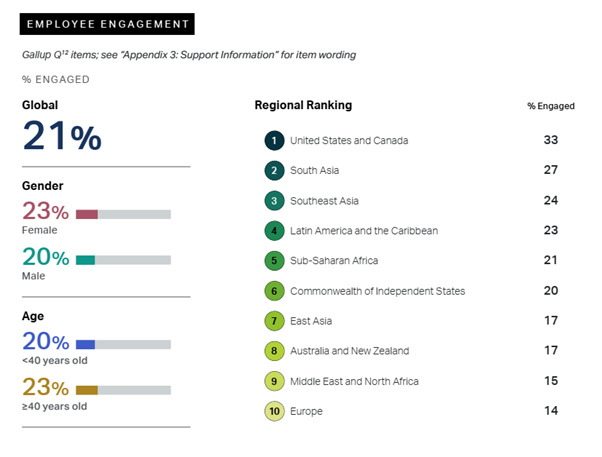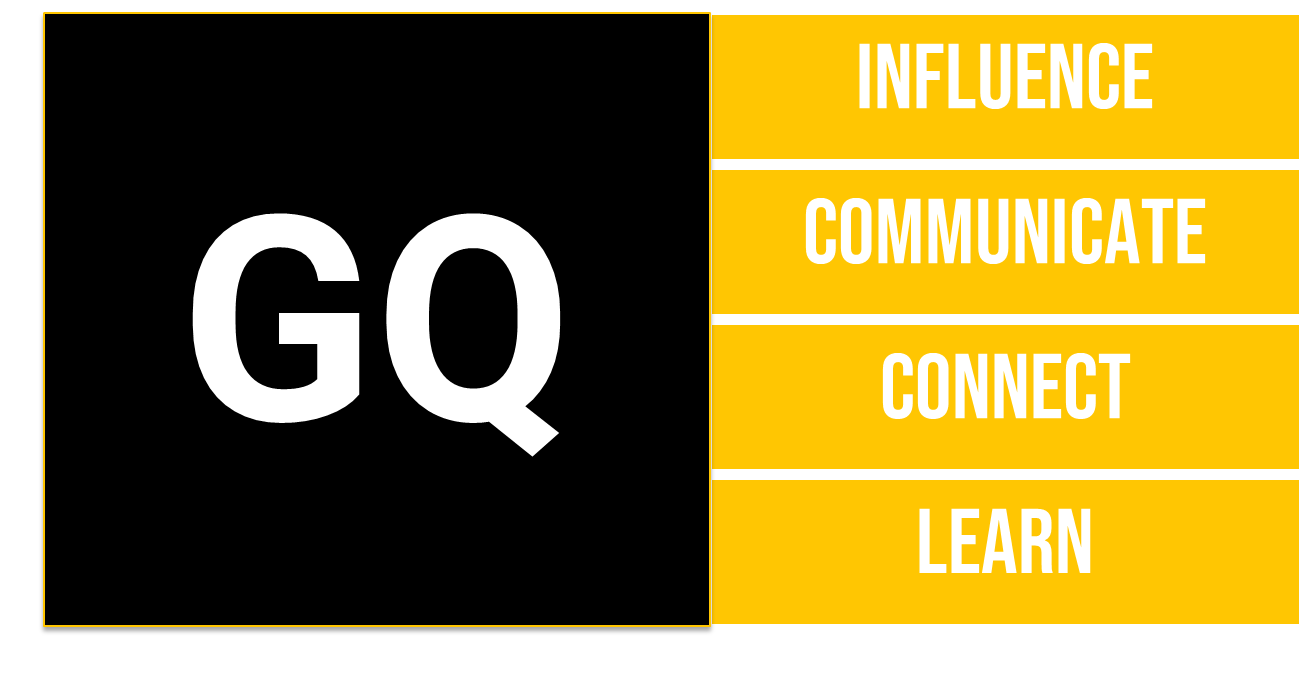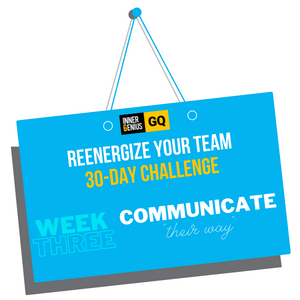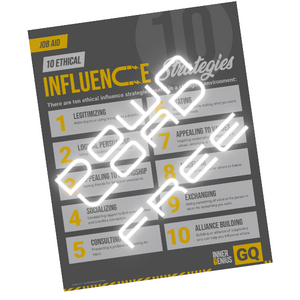Refocus and reenergize your team in 30 days | Catherine Mattiske
Aug 8
/
Catherine Mattiske

Company Culture Near-Catastrophe (based on a true story)
Once upon a time in the Dublin Docks, there was a company spreading across several floors with 400+ employees. One day a manager was hired. It was only a matter of weeks before she managed to become the most disliked and most talked person on the 3rd floor. The “bad boss” wore inappropriate attire, asked inquisitive questions, micromanaged, and openly judged anyone who was different from her. What really affected people was her “I can do it best” attitude and her opinionated biased advice.
The employees started to use the word “unbearable” more frequently. Some of them wondered how much more of her behavior they could handle. Others started to prepare their resume. People called in sick more often and applied for annual leave, and within weeks the lighthearted and buzzy office environment turned quiet and sullen. Work outputs plummeted. One team member, who we will call “courageous” decided to write directly to the Director and asked for a meeting about an important matter. “Courageous” jumped right across several management levels. The Director agreed to this meeting. “Courageous” voiced all of the concerns in a diplomatic and professional way outlining the impact on the team and the business. Amazingly, the Director did not have a clue that any of this was happening.
A few days passed.
Eventually, the “bad boss” stopped coming to the office. The big news spread quickly that she had resigned. Quickly, it came out that she was fired. Everyone was so relieved.
The employees started to use the word “unbearable” more frequently. Some of them wondered how much more of her behavior they could handle. Others started to prepare their resume. People called in sick more often and applied for annual leave, and within weeks the lighthearted and buzzy office environment turned quiet and sullen. Work outputs plummeted. One team member, who we will call “courageous” decided to write directly to the Director and asked for a meeting about an important matter. “Courageous” jumped right across several management levels. The Director agreed to this meeting. “Courageous” voiced all of the concerns in a diplomatic and professional way outlining the impact on the team and the business. Amazingly, the Director did not have a clue that any of this was happening.
A few days passed.
Eventually, the “bad boss” stopped coming to the office. The big news spread quickly that she had resigned. Quickly, it came out that she was fired. Everyone was so relieved.
In summary: the foundation stones to make this outcome happen were:
- A “courageous” and influential Team Member
- An open-minded Director willing to listen
- A Company Culture that made this all possible
THE FACTORS OF LOW EMPLOYEE ENGAGEMENT – why should we care?
Gallup estimates that low engagement costs the global economy US$7.8 trillion and accounts for 11% of GDP globally.
From the positive perspective, companies with engaged workers achieve higher profits and see significantly lower absenteeism, turnover and accidents and the loyalty of their customers is also higher.
HOW ENGAGED ARE EMPLOYEES ACROSS THE WORLD?
The numbers associated with the level of engagement across the globe revealed by the Gallup institute (State of the Global Workplace 2022) do not look very optimistic. Prior to the pandemic, engagement was rising globally, but that is not the case anymore.

In 2021, the big topic was the great attrition with 1 in 5 employees quitting or thinking about leaving their job within the next half year, stating burn-out as the bottom-line issue. That was just the tip of the iceberg, covering multiple internal factors such as work-life balance, low flexibility, lack of career growth or a job not fitting personal values.
With 2022, the situation has changed again, with external factors such as global insecurity and rising inflation, adding some extra tensions, as prices of gas, food and other consumer goods are skyrocketing and the worries have significant impact on the work of the employees.
With 2022, the situation has changed again, with external factors such as global insecurity and rising inflation, adding some extra tensions, as prices of gas, food and other consumer goods are skyrocketing and the worries have significant impact on the work of the employees.
IS THE BAD BOSS THE REASON OF IT ALL?
Many articles have simplified the reason for resignation by talking about “employees leaving their managers, not the companies.” But in fact, according to the WorkBuzz research, only 1 in 8 employees cited their manager as a factor why they would consider leaving.
When we look back at our opening story, the “Courageous Employee” did not leave, but, since the Company Culture enabled this, he could directly approach the Director, arrange a one-to-one meeting, stating the problem, and express the worries of many colleagues. He was 100% assured it would all remain confidential and with no negative consequences for him.
The healthy company culture played a vital part, allowing the voice of the employees to be heard, investigating the matter, and eventually making the “bad boss” leave the company, rather than the disengaged employee/s.
the Company CULTURE AND THE employee engagement
For many leaders is it challenging to define what the organizational culture is, although it has a major impact on the employee experience and their engagement.
There is a famous Peter Drucker quote that says that "culture eats strategy for breakfast". This implies that the culture of your company always determines success regardless of how effective your strategy may be.
On top of that, the culture of the companies has changed significantly over the past two years and the organizations try to determine the new normal in their operations.
More than often, employers are more likely to focus on transactional factors, while employees consider interpersonal factors more important. And it is mostly the interpersonal factors, that determine the company culture. These are the ones highlighted by the employees:
- I am valued by my manager
- I am valued by my organization
- I have caring and trusting teammates
- There is a sense of belonging
As part of strong DEIB (Diversity, Equity, Inclusion & Belonging) strategy, these things manifest in how the decisions are made, how the organization communicates and how is the work recognized. The Genius Quotient (GQ Model) helps identify and remedy this:

HOW TO REENERGIZE YOUR TEAM – A 30-DAY CHALLENGE
Why not embark on a challenge that will help you reenergize your team!
While redefining company culture may truly pose a huge challenge and something perhaps done at a higher and global level within the organization, a leader of even the smallest team can start today. After all, the future lies with adaptive teams, able to function as self-sustainable living organisms and contribute to the functioning and well-being of the whole organization. Let’s get you and your team into each of your Genius Zones and supercharge communication and influence to make a stellar company culture.

CHALLENGE WEEK 1 – LEARN ABOUT YOURSELF
To be able to communicate with colleagues and make a real connection, it is vital knowing how you take in and best process information, in other words – What are your personal preferences when you learn new things? This may sound easy, but often, we are not aware of how we learn most effectively.
Try to notice the following about yourself this week:
-
Do you prefer watching videos, listening to podcast, trying new things by trial and error?
-
During meetings, do you take detailed notes, record things, draw mind maps or use highlighters in many colors?
-
Do you excel during brainstorming and prefer discussions, or do you prefer working alone?
-
Do you need to see a big picture or prefer step-by-step logic?
Tip for this week: Which of these four areas is your primary focus when you learn new information?
1. Do you need to know what the benefit is?
2. Do you need to know what are the facts and details?
3. Do you need to know how it works?
4. Do you need to know the tips and traps?
By knowing how you learn, gets you into your Genius Zone. That is the place where you are operating effectively and efficiently plus bringing the best of yourself to your work, your team and the organization.
If you want to unlock your learning preferences do the Inner Genius Profile and you’ll discover your Archetype and Power-Up to accelerate your learning.


CHALLENGE WEEK 2 – connect to others
One of the top priorities in any company, in any industry, is building company culture. At any point in time, one of the most important and visible aspects of company culture is how leaders and colleagues connect and interact. Leaders cannot push company culture on their team or force their team to connect with one another. No leader or colleague can do it for the other person. They have to be willing to work with the other person to achieve this goal. Truly connecting with your team requires developing connections with your colleagues.
Task 1 – Share how you learn with your team/colleagues
Build on your knowledge from last week. You now know what some of your preferences are, tell them to your colleagues. You can even make a small poster on your office wall or a virtual background for your next virtual meeting. Make them short and simple – three sentences will do.
Task 2 - Try to notice the following about your team colleagues this week
You can now do the same exercise as last week, but this time, shift the focus to your immediate colleagues. Try to notice what are their preferences. How do they communicate during meetings/ virtual meetings?
-
Do they prefer to speak their minds or use chat for expressing their ideas?
-
Do they send multiple e-mails until they get what they want, or do they prefer to using phone to clarify things?
-
Do you notice they drift away when you get too detailed, or ask why they should be involved at all?
Tip for this week: Make a network map of your colleagues to note down, or draw, your observations. If there are empty spaces and you are unsure, ask them to give you some guidance.
Network mapping is a unique way to help you better understand your colleagues and work together with them. It is a great way to find out who has the skills and availability you need to complete a project on time. Network mapping is also a great way to form a shared understanding of how your team is structured.
Create a Team Map by having all of your team/network complete their Inner Genius Profile and build connections and collaboration faster.

CHALLENGE WEEK 3 – communicate "their way"
Communication is a key part of building a successful company culture. A company culture is not simply a buzzword that people use to sound good. It's a company's philosophy of how they like to do business. Businesses should have a clear set of values and they need to be communicated to their employees.
One of the key secrets to building a great company culture is by adapting your communication to the preferences of your team or network. When it comes to communicating with your employees, they may not be as receptive as you would hope. If you want to build a positive company culture and better relationships with your employees, then you need to learn how to adapt your communication.
When it comes to communication, it's important to adapt to the communication preferences of your employees. This week we encourage you to adapt your communication style to create a positive company culture.
Task 1 – Adapt communication to “their way”
Now, build on week two. Utilize the knowledge you collected so far. When you are about to engage with your colleagues individually, adapt your communication to their preferences.
Tip for this week: The sign of success that you communicated well is that there will be no follow-up questions, no email ping-pong (asking questions back and forth), no wasted meetings, and your team or colleagues will provide you with what you’ve asked, first time.
If you do not have the tools and system to adapt your communication, the Inner Genius profile and its exceptional communication toolkit can help you translate your messages to increase engagement.


CHALLENGE WEEK 4 – influence for success
If you want to create a positive company culture then you need to influence for success. The Genius Quotient states, "the power of influence is the ability of a person to positively change the actions and outcomes of others." It's about positive leadership -- "a powerful, positive, and intentional act of leadership that leads to a positive outcome." We all strive to have a positive company culture. You can make your company culture positive by creating a positive attitude, creating a growth mindset, focusing on relationships, and creating a healthy work-life balance which paves the way to individual and leadership influence.
Free job aid - influence mindset
Is influencing one of your areas for development?
We can all be more influential - it's a never-ending professional skills growth and learning opportunity.
Download this tool to explore how to harness your Influence Mindset.
In our opening story, everyone on the team was concerned with the behavior of the new manager. They were worried and complaining in their circles and all, but one person did nothing to change the situation. The “Courageous Employee” was able to move the issue from the area of his concern into the area of his influence.
The “Courageous Employee” framed the problem and communicated it in a powerful way and that made the Director listen. Thanks to his courage and the supportive Company Culture, the matter was investigated with high priority, and immediate action followed. It directly influenced the disengagement of many employees.
Remember, influence is not manipulation. It's a way to help others make better decisions. And with the power of influence, you can help others build momentum—but make sure it is for the right reasons. This week, your focus is on ethical influence strategies.
Task 1 – Focus on Circle of Influence Network
- Which items can you move to your area of influence? Select, focus, and act on issues you can influence and park the other problems for now.
- Map your network: Who in your team can you directly influence in connection with the issue? What are the steps to do that?
Tip for this week:
It all starts and ends with the influence mindset – here are some of them you can tap into
It all starts and ends with the influence mindset – here are some of them you can tap into
1. Be unique
2. Find common ground
3. Show value
Free job aid - Ethical influence Strategies
Think influence is manipulation? Think again!
Today's most effective influencers, leaders, and salespeople have an ethical influence mindset.
Download this tool to explore the Ethical Influence Strategies
In Conclusion
The age of great attrition and great inflation has brought many challenges for employee engagement, triggering a necessary redesign of company culture, and as a result, makes employee experiences as smooth and engaging as possible.
Quantum Workplace research shows 65% of employees say their company culture has changed in the past two years.
Identifying the organizational culture and when and how to re-define it, may seem like a huge question to digest. Since the traditional hierarchical companies are slowly in decline, the redesign does not necessarily need to only come from the top level. Like the functioning democratic society requires the active engagement of citizens and communities, the functioning organization requires the active engagement of employees, teams, and managers as self-functioning units.
Consequently, courageous influential employees, listening and understanding leaders, and engaging culture are co-dependent. While it may take more time to have all parts working at an optimal level, you can start by moving things into your circle of influence now as a team member or a leader. We know that culture is so important for a company to thrive and grow.
The unifying element of company culture is communication.
It is often overlooked, but without effective communication, our co-workers usually get the short end of the stick. We hope that our post is able to shed some light on the importance of effective communication and how it can help your company be more successful.
You can learn more about Learning, Connecting, Communicating, and Influencing by enrolling in Inner Genius Programs. By mastering all four levels, you will unlock your Genius Zone and fully utilize your own Genius Quotient, for leaders, team members, entrepreneurs, and business professionals.
Quantum Workplace research shows 65% of employees say their company culture has changed in the past two years.
Identifying the organizational culture and when and how to re-define it, may seem like a huge question to digest. Since the traditional hierarchical companies are slowly in decline, the redesign does not necessarily need to only come from the top level. Like the functioning democratic society requires the active engagement of citizens and communities, the functioning organization requires the active engagement of employees, teams, and managers as self-functioning units.
Consequently, courageous influential employees, listening and understanding leaders, and engaging culture are co-dependent. While it may take more time to have all parts working at an optimal level, you can start by moving things into your circle of influence now as a team member or a leader. We know that culture is so important for a company to thrive and grow.
The unifying element of company culture is communication.
It is often overlooked, but without effective communication, our co-workers usually get the short end of the stick. We hope that our post is able to shed some light on the importance of effective communication and how it can help your company be more successful.
You can learn more about Learning, Connecting, Communicating, and Influencing by enrolling in Inner Genius Programs. By mastering all four levels, you will unlock your Genius Zone and fully utilize your own Genius Quotient, for leaders, team members, entrepreneurs, and business professionals.

About Catherine mattiske
Catherine Mattiske, best known for creating ID9 Intelligent Design and the Genius Quotient (GQ), is a leading light in the corporate learning and team-building industries. She regularly works with large and small organizations to help team members better understand one another while effectively collaborating and boosting individual and team morale and productivity in the workplace.

GQ Global Pty Limited
GQ Global Pty Ltd
Level 20, Darling Park
Tower 2, 201 Sussex Street
Sydney NSW 2000
Australia
P +61 (02) 9555 1953
Level 20, Darling Park
Tower 2, 201 Sussex Street
Sydney NSW 2000
Australia
P +61 (02) 9555 1953
Connect with us
Media Enquiries
TPC has a dedicated media department. Members of the press are welcome to visit the press kit.
BECOME AN Affiliate
Join our GQ Partner Program here.
Contact
We are here to help! Our Customer Service Team is available to assist you.


